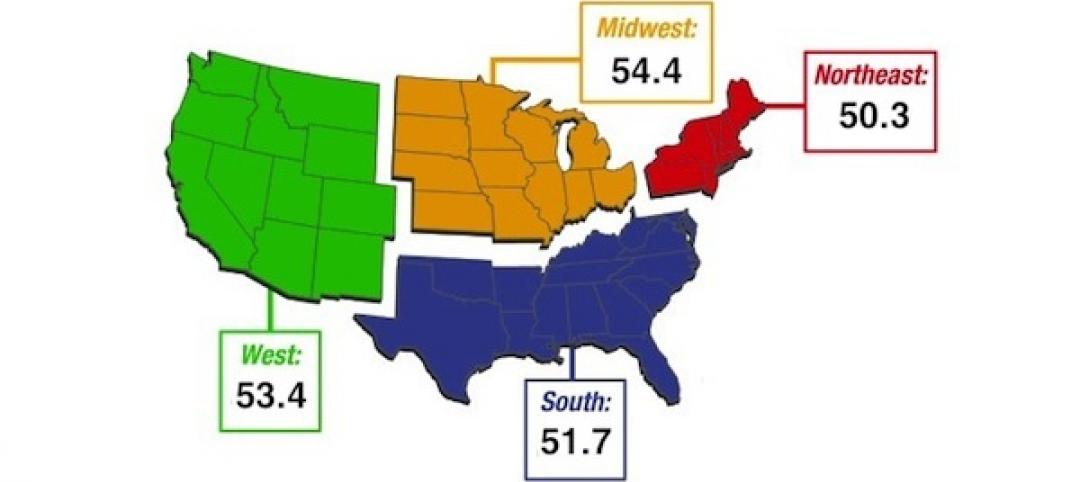Representatives from the architectural regulatory authorities of United States, Canada, and Mexico have announced a major agreement to mutually recognize architect credentials in the three countries, making it possible for architects to work across North American borders.
The National Council of Architectural Registration Boards (NCARB) in the United States, in conjunction with the Canadian Architectural Licensing Authorities (CALA) and the Federacion de Colegios de Arquitectos de la Republica Mexicana (FCARM), announced the final implementation of the Tri-National Mutual Recognition Agreement for the International Practice of Architecture among the United States, Canada, and Mexico.
The agreement represents over a decade of negotiations, bringing cross-border recognition of professional credentials from concept to reality in the spirit of the North American Free Trade Agreement (NAFTA). Qualified architects, from each country, who satisfy the requirements of the agreement, will be granted a credential that will lead to a license to practice architecture in the host country.
Informally known as the Tri-National Agreement, the pact outlines specific requirements that architects must satisfy when pursuing mutual recognition. These include education and work qualifications, as well as submitting documentation to confirm the individual’s credentials. A few of the basic eligibility requirements include:
• Completion of a professional degree in architecture from a program accredited by the National Architectural Accrediting Board (NAAB), the Canadian Architectural Certification Board (CACB/CCCA), Acreditadora Nacional de Programas de Arquitectura y Disciplinas del Espacio Habitable (ANPADEH), or recognized equivalent.
• A minimum of 10 years of post-licensure experience in the architect’s home jurisdiction.
• Proof of “Good Standing” in the home jurisdiction, as verified by the local regulatory authority.
• Knowledge of the codes, laws, and other matters applicable to the practice of architecture in the host country.
• Submission of a dossier of work to satisfy the specific competencies outlined in the agreement related to “responsible control and comprehensive practice.”
• Completion of an interview before a review panel in the host country, conducted in the language of the host country.
The agreement, along with similar programs, opens doors to qualified architects as the world and architectural practices become more globally connected. Architects interested in pursuing the opportunity for licensure outside of their home country should review the eligibility requirements and program information in greater detail as posted on the NCARB website. Additional details and standard application forms can be obtained by contacting the regulatory authority in the architect’s home country.
The path to the Tri-National Agreement has its origins in the passage of NAFTA in 1994, which spurred a discussion between leaders and regulators of the architecture profession in the United State, Canada, and Mexico to consider ways to facilitate the mutual recognition of licensure credentials among all three countries.
The initial agreement, signed in 2005 by the leaders of the profession in all three countries, marked what many considered to be one of the first professional services recognition programs under NAFTA. The study of the path to licensure in each country, the subsequent negotiations, the pilot program, and the final mechanisms for implementation continued over the following years, with support from volunteer leaders and staff from all three countries’ licensing authorities.
Throughout the process, the underlying goal has been to remove barriers and provide qualified architects the opportunity to offer professional services across borders while ensuring the protection of the public health, safety, and welfare. The agreement applies to architects from the United States, Canada, or Mexico who have not used other mutual recognition agreements for initial licensure in their home country.
Related Stories
| Feb 21, 2013
AIA College of Fellows awards 2013 Latrobe Prize for 'The City of 7 Billion'
The American Institute of Architects (AIA) College of Fellows has awarded the 2013 Latrobe Prize of $100,000 for the proposal, “The City of 7 Billion.”
| Feb 21, 2013
BD+C's 2011 White Paper: Zero and Net-Zero Energy Buildings + Homes
We submit our eighth White Paper on Sustainability in the hope that it will inspire architects, engineers, contractors, building owners, developers, building product manufacturers, environmentalists, policymakers, government officials, corporate executives, officeholders, and the public to foster the development of net-zero energy buildings and homes.
| Feb 21, 2013
BD+C's 2008 White Paper: Green Buildings + Climate Change
In this White Paper, we provide concrete ways in which AEC professionals can have a positive role in addressing climate change.
| Feb 21, 2013
Holl videos discuss design features of Chengdu ' Porosity Block' project
Architect Steven Holl has released two short films describing the development of Sliced Porosity Block in Chengdu, China.
| Feb 21, 2013
Construction team chosen for world's tallest building in Jeddah, Saudi Arabia
Construction team chosen for world's tallest building in Jeddah, Saudi Arabia.
| Feb 21, 2013
Stephen C. Wright joins Leo A Daly as Managing Principal in D.C.
International architecture, planning, engineering, interior design and program management firm LEO A DALY welcomes Stephen C. Wright, AIA, as the new managing principal of the Washington, D.C., office. Wright will oversee the D.C. team in executing federal, local government, private and non-profit projects and pursuing new business opportunities in markets including aviation, corporate and commercial, higher education, hospitality and institutional facilities.
| Feb 20, 2013
Architecture Billings Index sees strongest growth since 2007
The American Institute of Architects reported the January ABI score was 54.2, up sharply from 51.2 in December. This score reflects a strong increase in demand for design services.
| Feb 19, 2013
'Pop-up' proposal would create movable cultural venue for NYC
The Culture Shed, a proposed 170,000-sf project for New York City's Hudson Yards development, could be the ultimate in "pop-up" facilities.

















